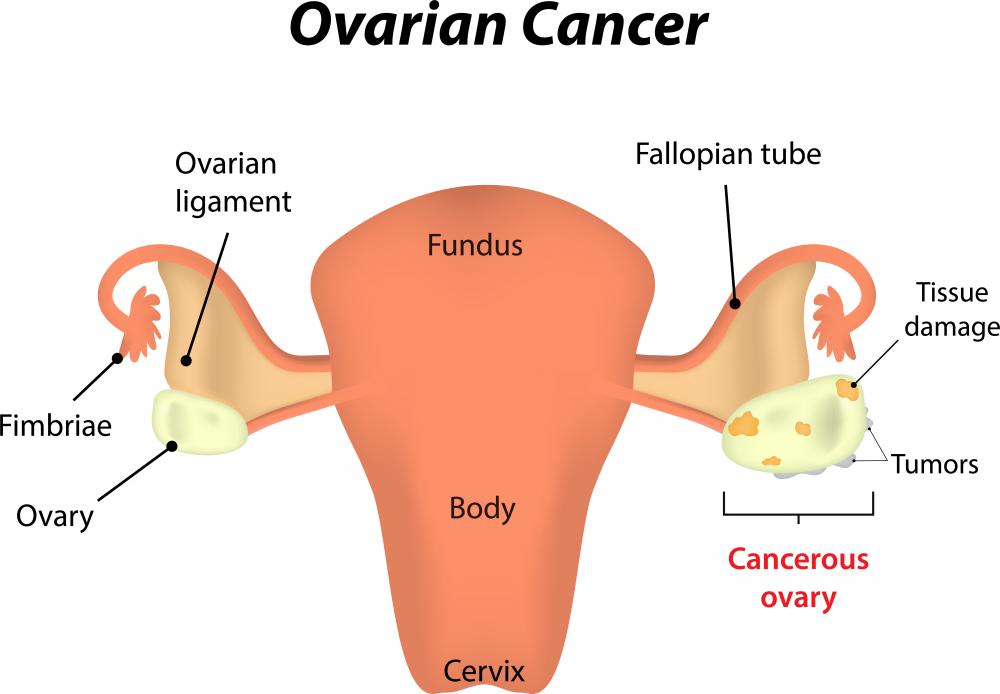At TheHealthBoard, we're committed to delivering accurate, trustworthy information. Our expert-authored content is rigorously fact-checked and sourced from credible authorities. Discover how we uphold the highest standards in providing you with reliable knowledge.
What Is the Difference between Cisplatin and Carboplatin?
The major differences between cisplatin and carboplatin include molecular structure, dosage, and side effects. Both intravenous chemotherapeutic preparations contain platinum but have slightly different molecular structures. While physicians may use cisplatin and carboplatin for lung or ovarian cancer, cisplatin is also used to treat bladder and testicular cancer. The ordinary dosage of carboplatin is up to three times higher than that of cisplatin in many cases, but the body eliminates carboplatin more quickly.
Platinum is central to the molecular structure of both cisplatin and carboplatin. Cisplatin contains ammonia molecules on one side of the central platinum molecule and chloride molecules on the other. Carboplatin has ammonia molecules on one side of the platinum molecule and an oxygen complex on the other. Both medications interact with the deoxyribonucleic acid (DNA) of both healthy and cancerous cells, inhibiting reproduction and general cell function.

Oncologists determine milligram dosages of cisplatin and carboplatin based on square meters of body surface area. Patients undergoing treatment for testicular cancer generally receive a cisplatin dosage of 20 mg/m2 of body surface daily for five days. Ovarian cancer patients receive 75 to 100 mg/m2 once a month, and bladder cancer patients receive 50 to 75 mg/m2 once every three to four weeks. Prior to administration of either medication, patients must hydrate with one to two liters of fluid. Ovarian cancer patients typically receive carboplatin in dosages of up to 300 mg/m2 once a month.

Carboplatin dosage might also be based on creatinine clearance or kidney function. Physicians sometimes treat ovarian cancer patients with a combination of carboplatin and cisplatin or cyclophosphamide. Though cisplatin and carboplatin have similar properties and structures, the body eliminates them differently. The kidneys eliminate up to 40% of cisplatin within 24 hours. Studies suggest that the higher solubility of carboplatin allows the body to eliminate up to 71% of it in 24 hours.

Once administered, the platinum in both drugs breaks free from the surrounding molecules in the compound and binds to plasma proteins, remaining in cells for up to 180 days. Both medications cause adverse reactions, but the effects of each differ. Reactions to cisplatin include central nervous system and peripheral toxicity, which produce symptoms that might include muscle cramps, painful muscle contractions, and seizures. Symptoms may appear after the initial dosage or after four to seven months of treatment. The medication may affect the eyes, causing blurred vision, color perception alterations, or blindness due to inflammation and swelling, but the visual disturbances disappear once treatment subsides.

Both cisplatin and carboplatin can cause a reduction in blood electrolyte levels, but some studies suggest that patients receiving cisplatin experience this more frequently. Electrolytes generally affected by the medications include calcium, magnesium, phosphorus, potassium, and sodium. Cisplatin can elevate blood uric acid levels, requiring that patients receive the medication allopurinol. While both cisplatin and carboplatin cause bone marrow suppression, affecting the lifespan and production of white blood cells and platelets, the condition occurs more readily with carboplatin administration.
AS FEATURED ON:
AS FEATURED ON:















Discuss this Article
Post your comments